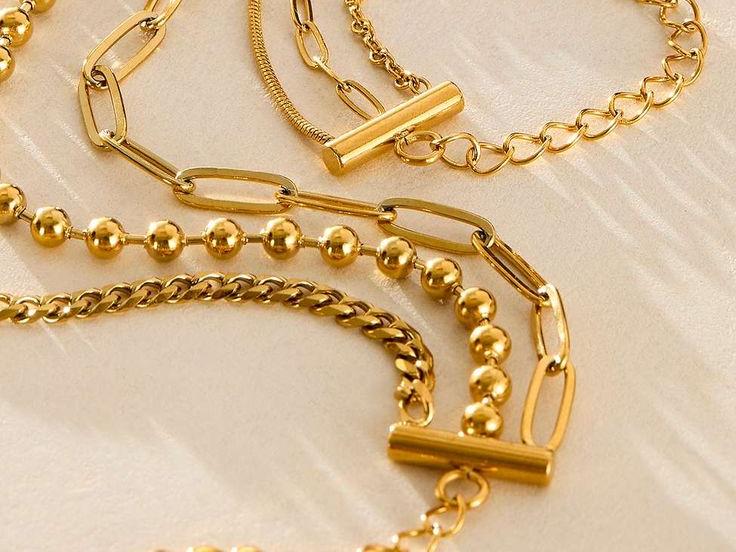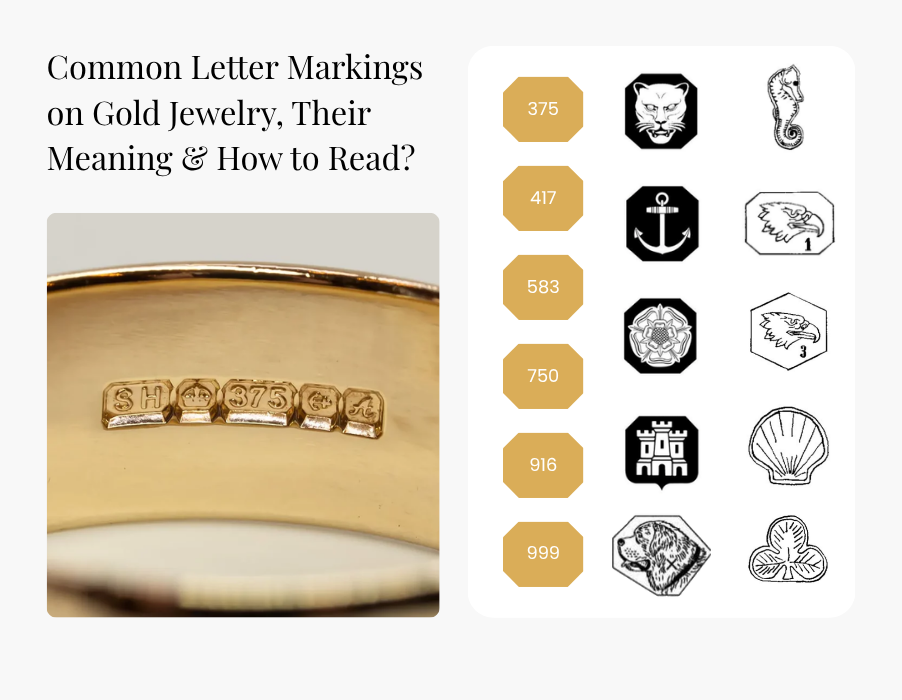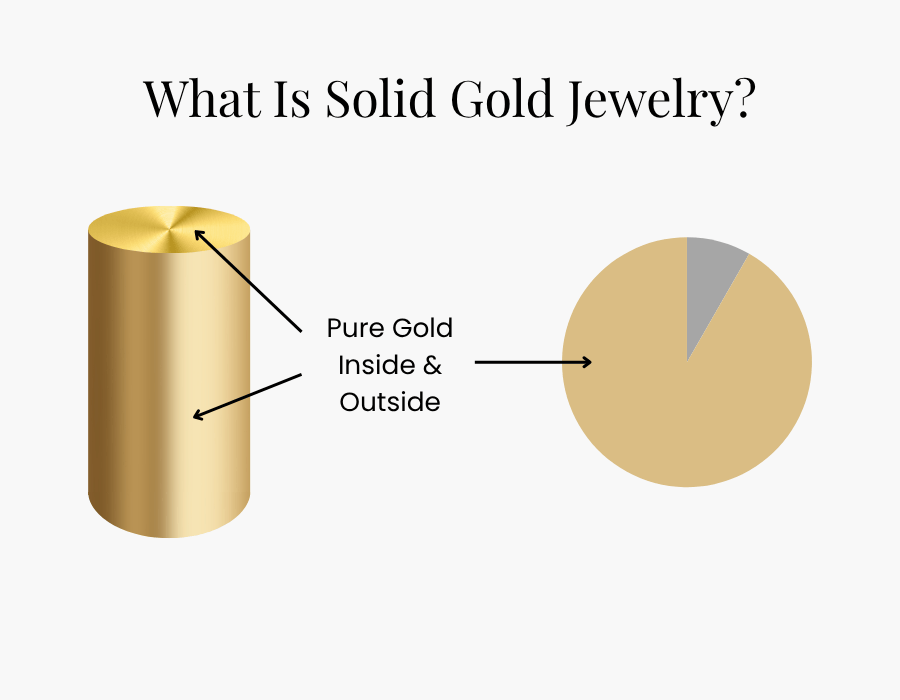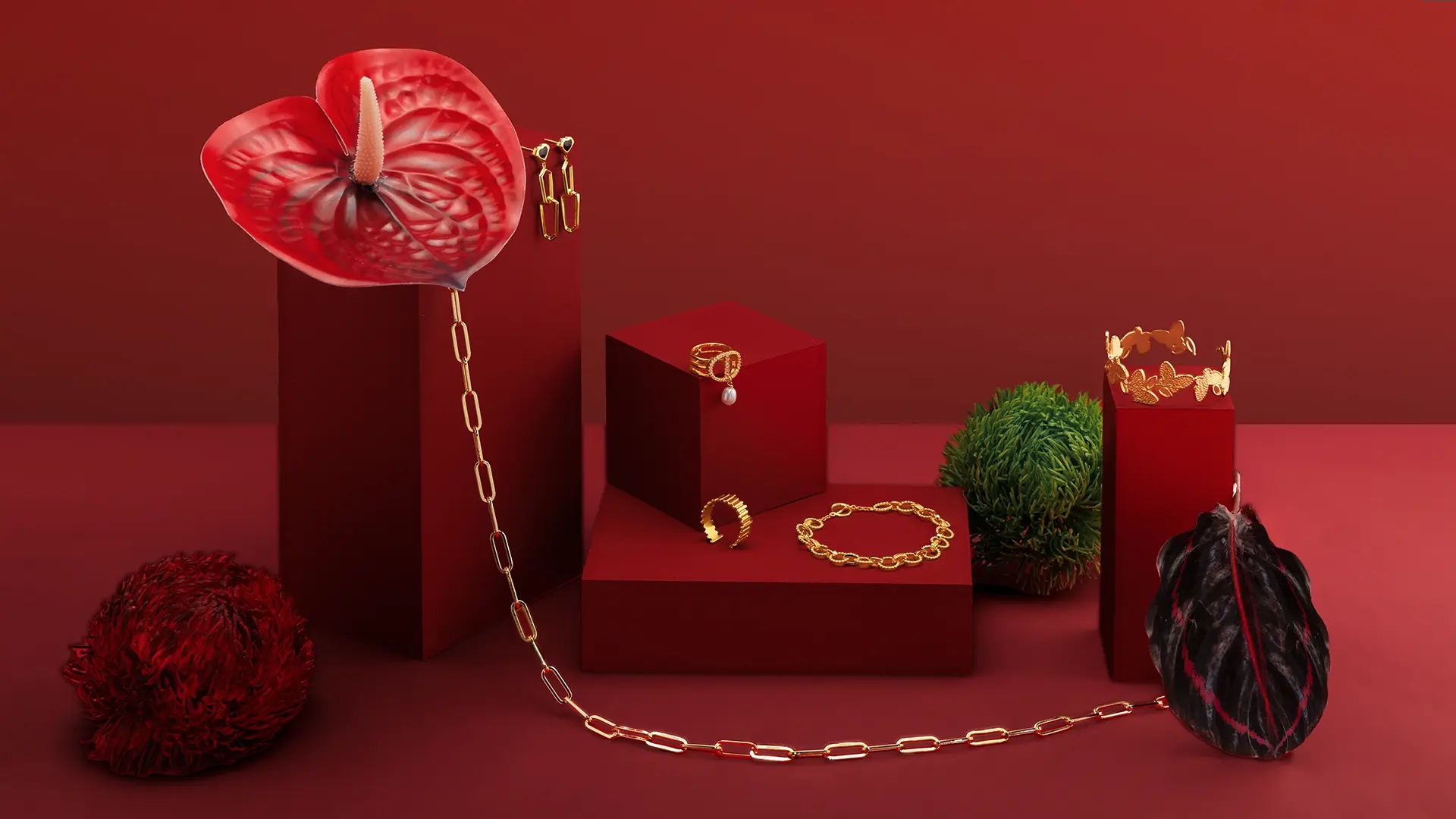Some pieces of gold jewelry may seem more yellow than others due to color variation. People frequently get these two colors mixed up, thinking that deeper yellow tones mean inferior quality. The amount of impurity in the gold and other alloying metals determines the hue of yellow.
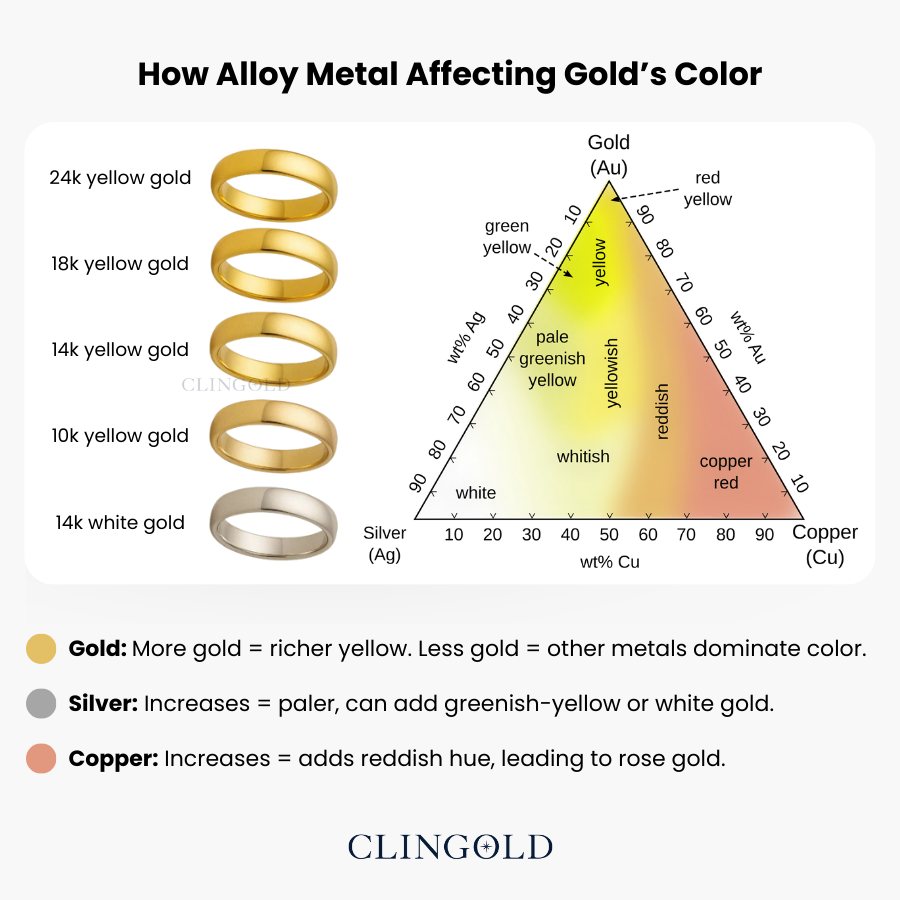
Does Yellow Mean Fake Gold?
The short answer: No, bright yellow gold plating doesn’t automatically mean your jewelry is fake.
Many people think deep yellow jewelry is phony or low-quality, but that’s false. The inherent tone of pure gold, especially 24-karat 99.9% gold, gives gold jewelry its vivid yellow color.
Gold is alloyed with copper, silver, or zinc to make it more durable because pure gold is too soft. The type and amount of these alloys can affect gold hue, from pale yellow to darker tones. The result? The jewelry’s deeper yellow tint may indicate a higher gold content or alloy blend, not fakery.
Gold plating can also have yellow tones depending on its thickness and the underlying metal. A thicker gold layer or alloy blend may make gold-plated jewelry yellow. The brighter yellow tone can simulate higher-quality gold, but it doesn’t suggest falsehood. Instead, the hue reflects manufacture and materials.
Remember that jewelry companies employ gold-plated goods to emulate solid gold at low prices. Therefore, a bright yellow tone alone does not indicate false jewelry. Jewelry craftsmanship, materials, and gold content or plating indications are most important.
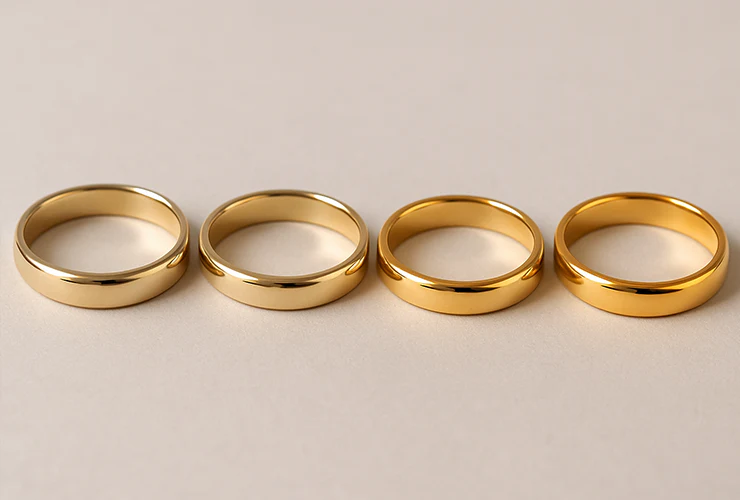
Why Is Some Gold More Yellow or Darker Than Others?
Gold color comes from a mix of factors like purity (karats), the metals blended with gold, and the thickness of the plating layer.
- Purity (karats): Higher karats like 24k give a deeper, richer yellow.
- Alloy mix: Metals such as copper or silver change the tone to warmer or lighter shades.
- Plating thickness: Thicker layers make the color look more vibrant and long-lasting.
| Factor | Less Yellow → | More Yellow → |
| Purity | 10K / 12K | 18K → 24K |
| Alloy Metal | More silver/nickel | More copper |
| Plating Thickness | Thin layer | Thick layer |
Color of Different Karats Yellow Gold(Most Commonly Seen)
The color of gold jewelry varies significantly based on its karat, which represents the purity of the gold. Higher-karat gold is purer and has a richer yellow hue, while lower-karat gold contains more alloyed metals, resulting in a paler appearance. Understanding the differences in color between karats can help you choose the right shade for your preference or style.
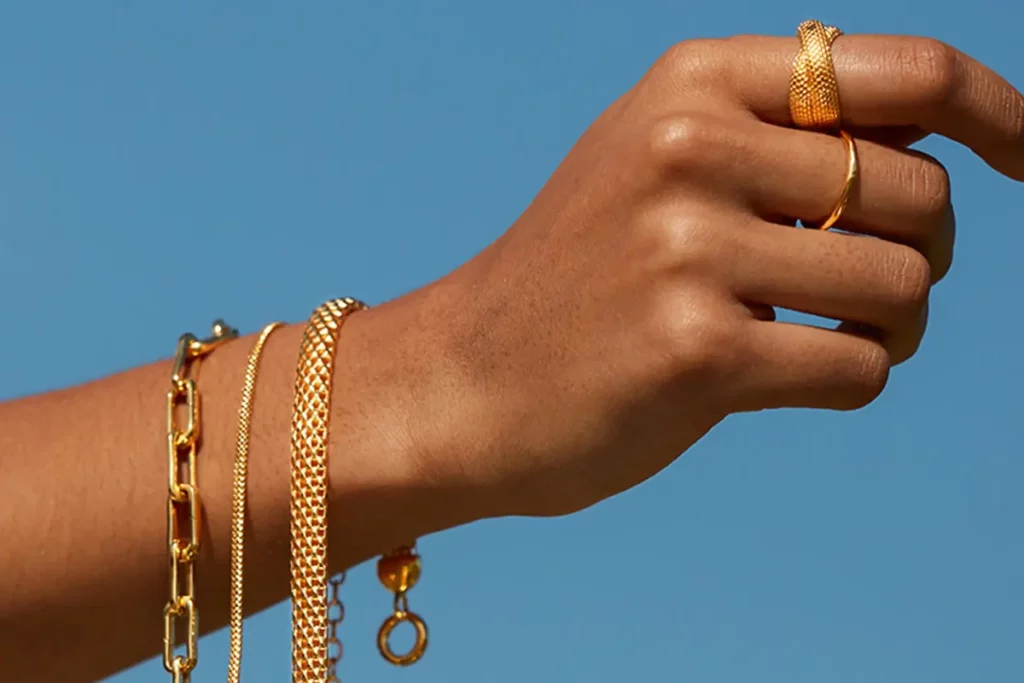
24k
Why is 24K gold so yellow? Pure 24-karat gold has the most vibrant yellow color. Its deep, rich tone is unmistakable and often considered the purest form of gold, though it’s softer and less common for everyday jewelry.
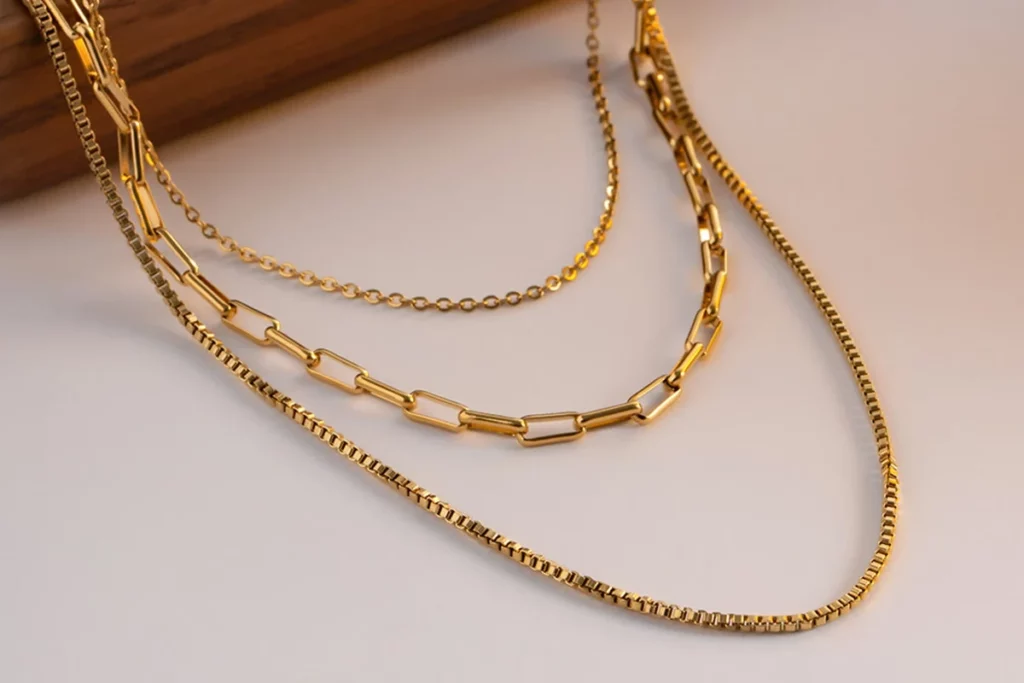
18k
With 75% pure gold, 18-karat gold has a slightly less intense yellow color than 24K. Adding other metals like copper or silver gives it more durability and a different yellow tone, making it a popular choice for high-quality jewelry.

14k
Containing 58.3% gold, 14-karat gold has a paler yellow tone. It strikes a balance between durability and aesthetics, which makes it one of the most commonly used golds in jewelry. Most of the non-gold metal part of this jewelry has a large influence over its color.
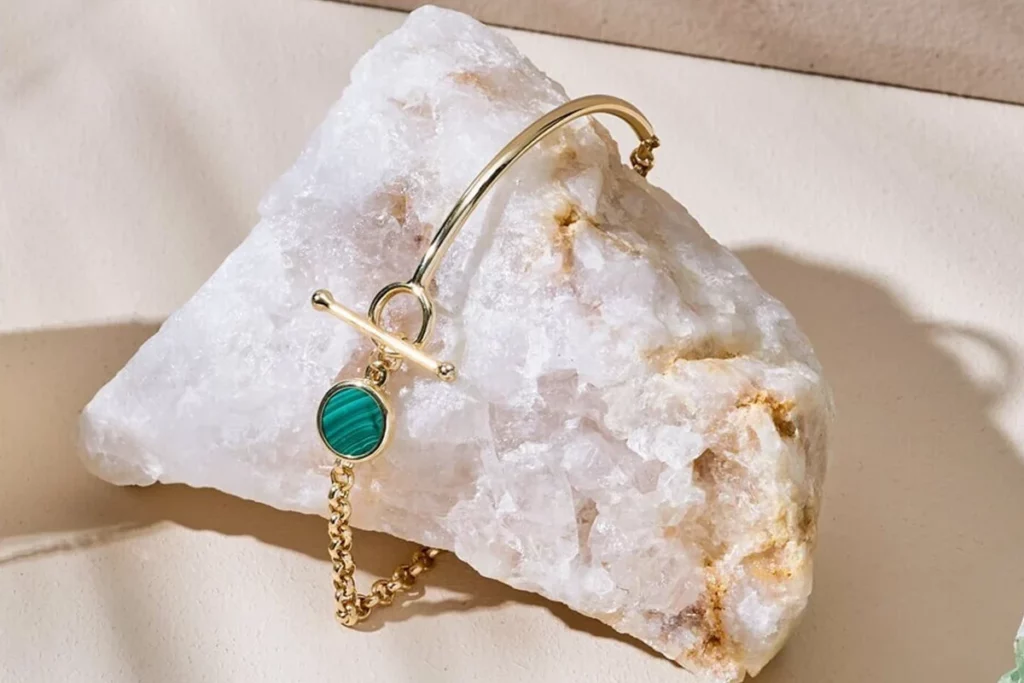
10k
With only 41.7% gold, 10-karat gold is the least yellow of the commonly seen karats. Its higher percentage of alloy metals results in a more muted, subtle yellow tone, often appearing less vibrant. Folks who want affordable jewelry, regardless of the color, will look for 10k pieces.
Why Do My Gold-Plated Jewelry Colors Not Match?
There is no standard hue level of gold-plated jewelry due to many factors. Brands and factories use varying alloys, base metals, and plating thicknesses in their manufacturing processes.
Gold plating lacks color standards, unlike Pantone. Even if both pieces of gold-plated jewelry use the same carat of gold, one may be slightly yellower. The hue also depends on the metal underneath the plating and the gold layer thickness. A thicker layer of gold plating may produce a richer yellow, whereas a thinner layer may reveal the underlying metal. Some jewelers add extra copper or silver to obtain a specific tone in the plating alloy blend, which can also affect color. Even when bought from the same company, matching gold-plated objects is challenging due to their lack of homogeneity.
Manufacturing standards vary, but jewelry quality doesn’t necessarily reflect them. If you want a uniform look, buy similar pieces from the same brand or collection. Otherwise, adopting tiny shade discrepancies can make your collection stand out without changing its design.
Can You Adjust the Yellow Tone Within the Given Gold Karat?
Changing the alloy combination can change the yellow tone of a gold karat. The karat measures gold purity, but the metals mixed with it, including copper, silver, zinc, or nickel, determine the yellow color. The gold’s color can be warmer and redder with copper or lighter and yellow with silver or zinc.
A gold jewelry manufacturer adjusts these alloy mixtures to achieve desired color variations while retaining a karat rating. This is why different jewelry pieces with the same carat may have varied yellow tints. While the gold content remains the same, the alloy combination allows jewelers to create pieces that complement a particular look.
How Do We Ensure Consistent Color in Gold Plating?
Several manufacturing aspects must be controlled to ensure gold plating color consistency.
- Maintaining a consistent alloy blend in plating gold is crucial. The same quantities of copper, silver, and zinc ensure uniform gold color throughout the pieces.
- Plating with a constant gold layer thickness across all products prevents color variations from the underlying metal showing through.
- A consistent finish is achieved by employing the same base metal behind the gold plating. Gold color might vary depending on the base metal.
Manufacturers and jewelers must standardize to ensure consistency with the colors. They can obtain a consistent yellow tone in their gold-plated jewelry by monitoring temperature, current, and chemical solutions during electroplating with a standardized gold jewelry quality control policy.
Can Gold Jewelry Be Less Yellow?
Yes. So how to make gold less yellow? Gold jewelry can be less yellow by changing the alloy mix or using lower-karat gold. It lessens the yellow hue when added to gold, silver, nickel, or palladium, making it paler. 10-karat gold, which has more alloy than pure gold, is less yellow than 18- or 24-karat gold.
Different gold finishes might affect the appearance along with alloy modifications. For a less yellow or neutral tone in gold jewelry, white gold combined with palladium or rhodium is popular. Tailor your gold plating color chart by working with trusted jewelry that accurately depicts the right tone and hue for your pieces.
Key Takeaway
Gold of higher purity is brighter and richer yellow, while pieces of lesser purity are paler. Since there are no industry-wide color standards, gold-plated jewelry might vary in hue due to plating thickness, alloy blends, and base metals. Gold jewelry may be colored consistently by controlling alloy mix and production procedures.
